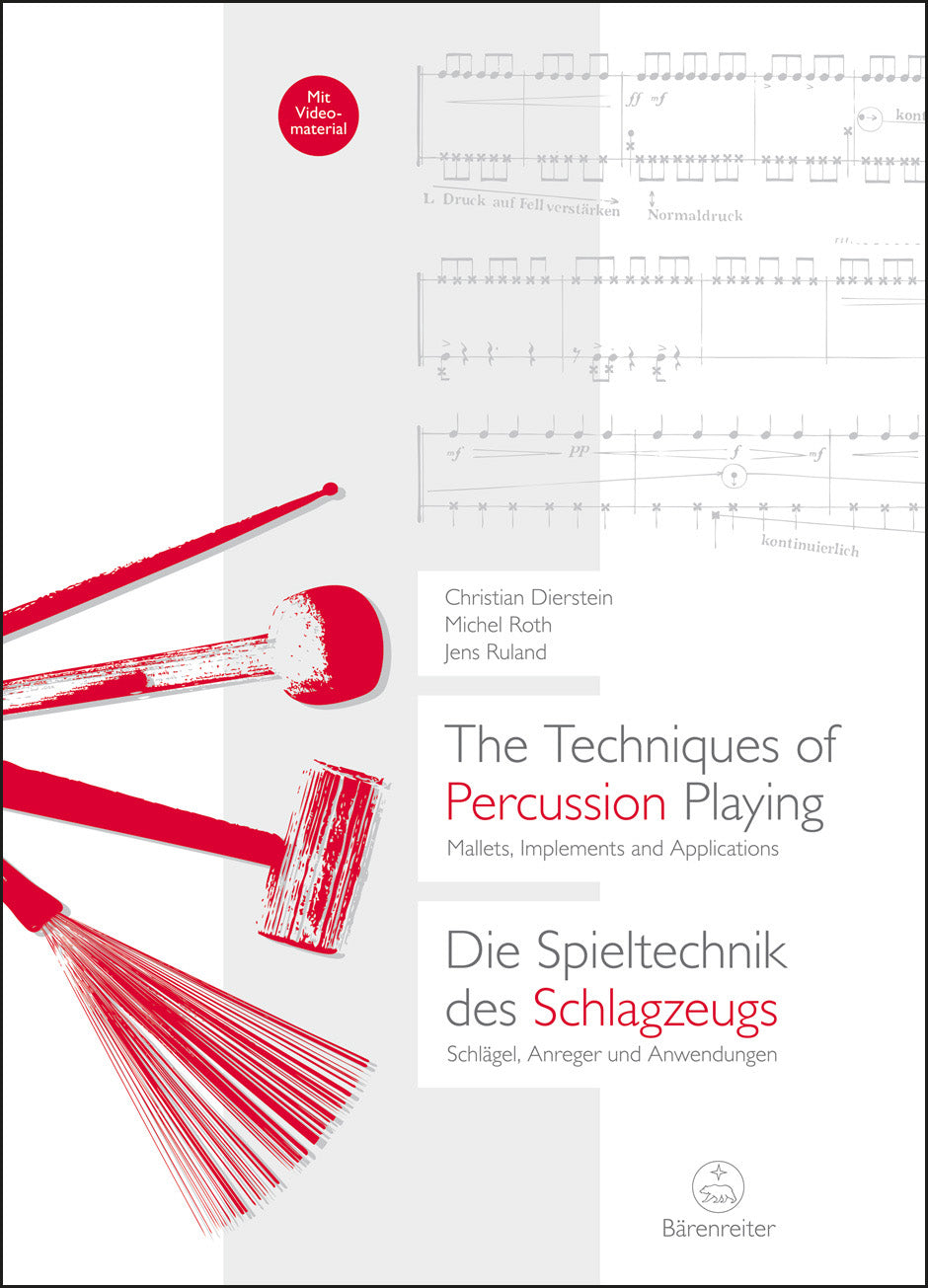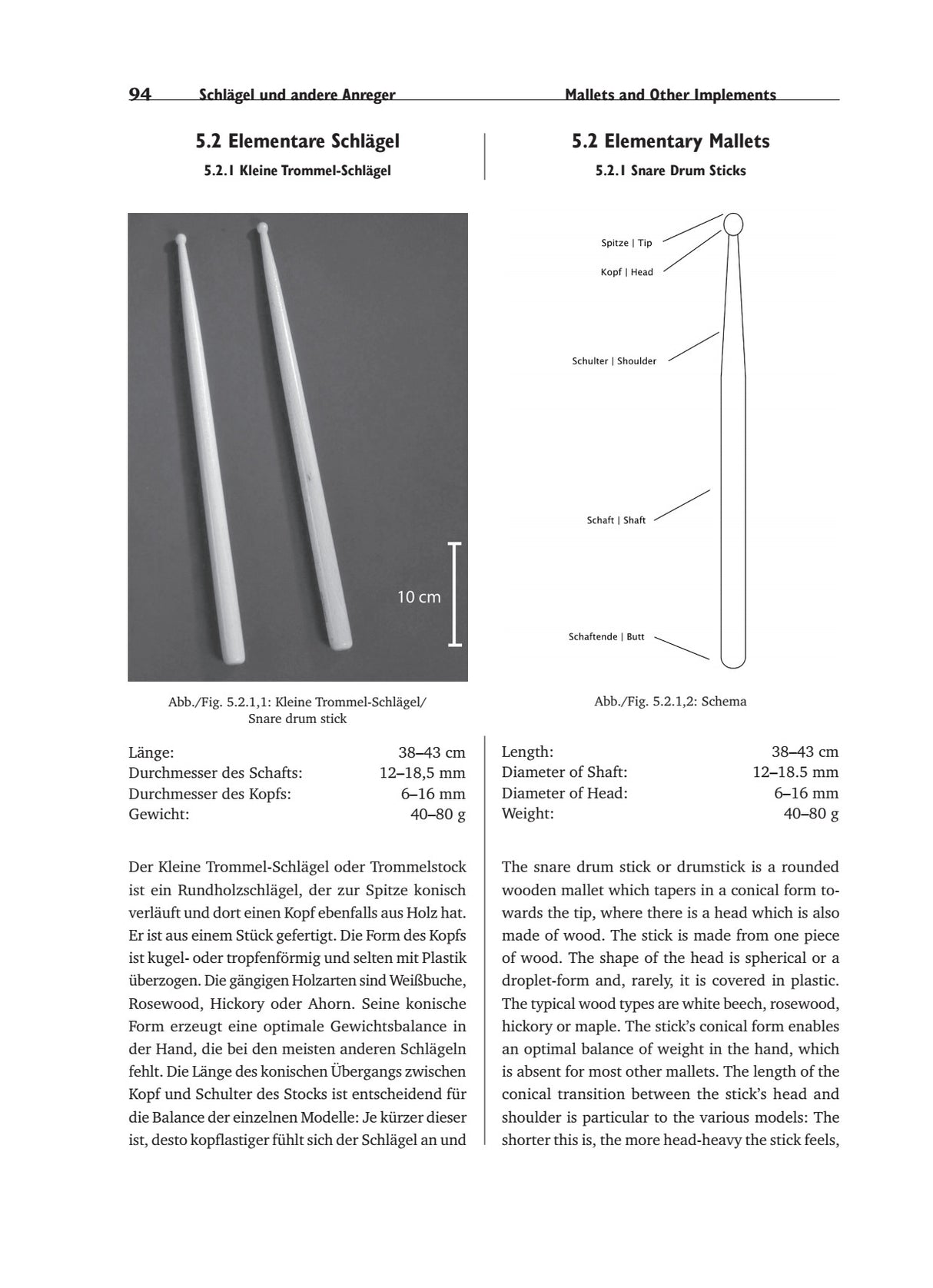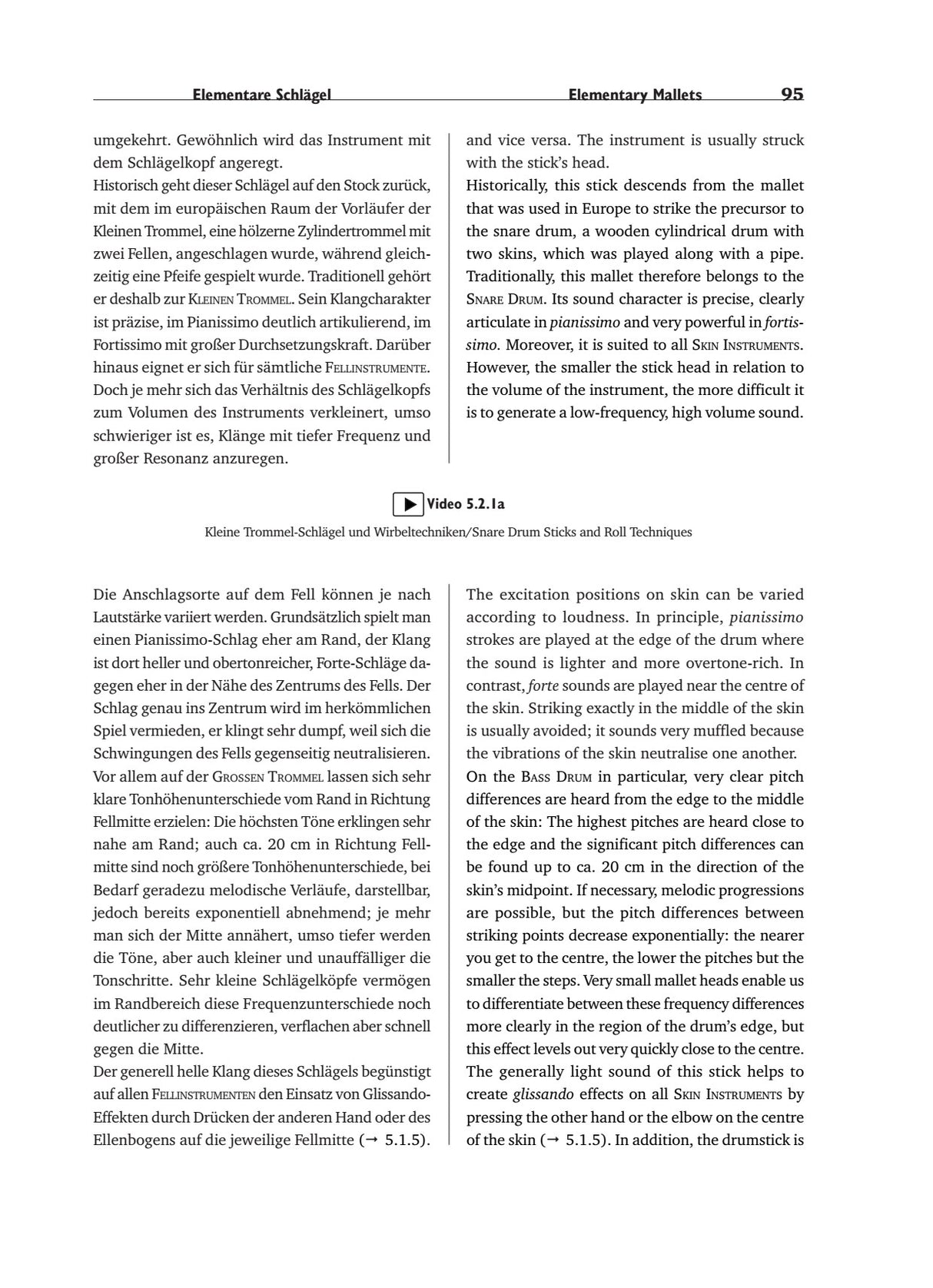The Techniques of Percussion Playing
Mallets, Implements and Applications
In stock and typically ships within 1 business day.
- Authors: Christian Dierstein, Michel Roth, Jens Ruland
- ISBN:
- Size: 8.3 x 11.5 inches
- Pages: 337
The acclaimed percussionist Christian Dierstein has joined forces with a research group at the Basel Academy of Music to examine the techniques of percussion playing from an innovative perspective. The main focus falls less on the instruments than on their sound producers: beaters, mallets, sticks, bows, specific manual techniques up to and including electronic pulse generators. This book describes all of them in detail and illustrates their range of application in carefully selected and annotated examples from the repertoire.
Many essays by guest authors such as Nicolaus A. Huber, Steven Schick, Fritz Hauser and Bernhard Wulff relate the performance descriptions to ongoing aesthetic debates. They reveal that sound production and interaction with sound-generating objects have moved centre stage in contemporary composition and its expanded concepts of material and performance. The result is a comprehensive reference book for composers and performers that will also serve as a source of inspiration for future innovative approaches in percussion playing.
The authors
Christian Dierstein completed his musical studies with Bernhard Wulff (Freiburg), Gaston Sylvestre (Paris) and Wassilios Papadopulus (Mannheim). A multiple prize-winner at music competitions, he has played percussion with "Ensemble Recherche" since 1988 and "Trio Accanto" since 1994 together with Nic Hodges and Marcus Weiss. in addition he has been professor of percussion and contemporary chamber music at the Basel Academy of Music since 2001.
Michel Roth is professor of composition and music theatre at the Basel Academy of Music and a member of its research department. As a composer he is a regular guest at music festivals, recently with a focus on music theatre. in 2017 Bärenreiter published his "Techniques of Trombone Playing" co-written with Mike Svoboda. This was awarded the "Best Edition" prize by the German Music Publishers Association in 2018.
Jens Ruland studied percussion with Carlos Tarcha at the Cologne University of Music (2007-12) where he completed his performance and teaching degree with distinction. Since 2012 he has consolidated his studies with Christian Dierstein in Basel. He is a founding member of "hand werk" (Cologne), "232 percussion" (Cologne), "Ensemble New4Art" (Switzerland) and the music theatre duo "Akt-tkA" (Spain and Switzerland).
Publishers use a lot of words to describe what they sell, and we know it can be confusing. We've tried to be as clear as possible to make sure you get exactly what you are looking for. Below are descriptions of the terms that we use to describe the various formats that music often comes in.
Choral Score
A score for vocalists that only contains the vocal lines. The instrumental parts are not there for reference. Generally, cheaper than a vocal score and requires multiple copies for purchase.
Facsimile
Reproductions of the original hand-written scores from the composer.
Full Score
For ensemble music, this indicates that the edition contains all parts on a single system (there are not separate parts for each player). In larger ensembles, this is for the conductor.
Hardcover
Hardbound. Generally either linen-covered or half-leather.
Orchestral Parts
Similar to a wind set, this is a collection of parts. In the case of strings, the numbers listed are the number of copies included, though generally these are available individually (often with minimum quantities required).
Paperback
When publishers offer multiple bindings (e.g. hardcover) or study scores, this is the "standard" version. If you're planning to play the music, this is probably what you want.
Performance / Playing Score
A score of the music containing all parts on one system, intended for players to share. There are not separate parts for each player.
Set of Parts
For ensemble music, this indicates that there are separate individual parts for each player.
Solo Part with Piano Reduction
For solo pieces with orchestra, this is a version that contains a piano reduction of the orchestra parts. For piano pieces, two copies are typically needed for performance.
Study Score
A small (think choral size) copy of the complete score meant for studying, and not playing. They make great add-ons when learning concertos and small chamber works.
Vocal Score
A score prepared for vocalists that includes the piano/organ part or a reduction of the instrumental parts.
Wind Set
For orchestral music, this is a collection of wind and percussion parts. The specific quantities of each instrument are notated.
With Audio
In addition to the printed music, the edition contains recordings of the pieces. This may be an included CD, or access to files on the internet.
With / Without Fingering (Markings)
Some publishers prepare two copies - a pure Urtext edition that includes no fingering (or bowing) suggestions and a lightly edited version that includes a minimal number of editorial markings.





